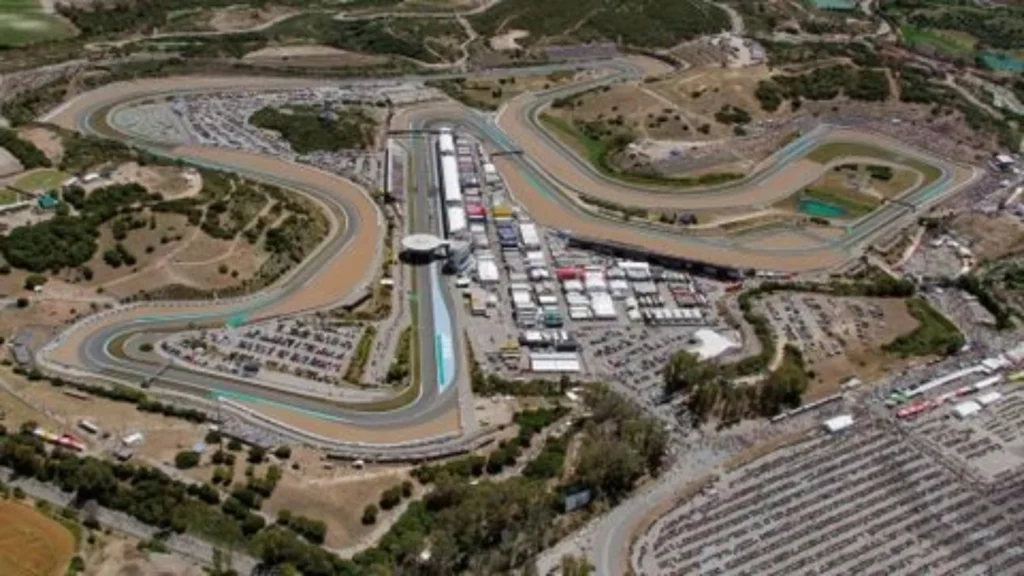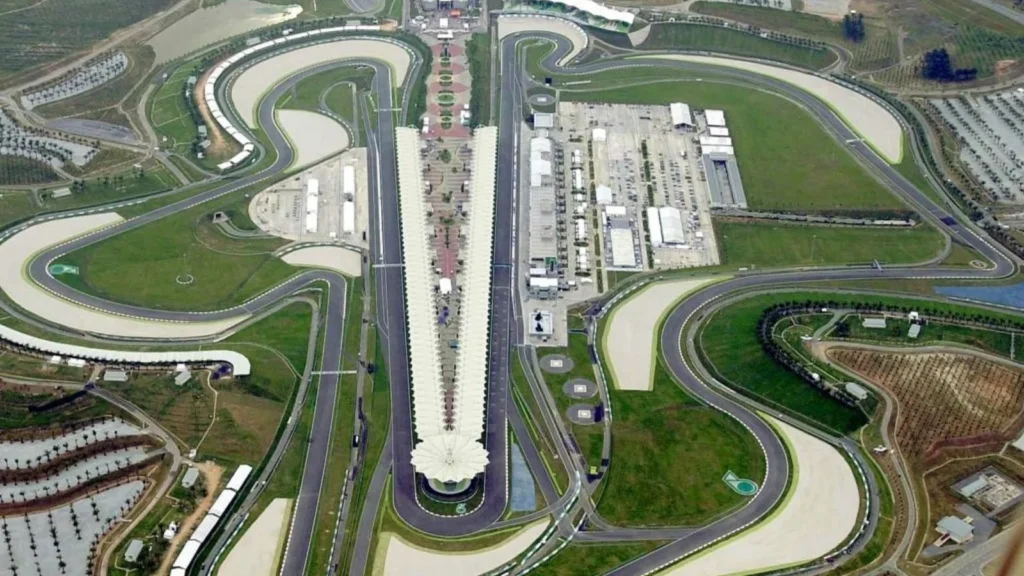The F1 calendar has expanded dramatically in the last 30 years. From hosting 17 rounds in the 1990s, the sport now has 24 rounds with circuits across six continents.
Despite the expansion, many a circuit have disappeared, confined to the annals of F1 history. Some of these hosted moments of infamy, title-deciding glory, as well as consistently fantastic racing.
With the rise of street circuits, and diluted racing in recent years, the journalists at Fastest Formula News have had their say on what classic F1 circuit to add to the 2026 calendar.

James Phillips, Founder and Editor-in-Chief: Jerez. Spain
The The Circuito de Jerez – Ángel Nieto hosted F1 races between 1986 and 1997. Located 56 miles south of Seville in Southern Spain, it is the scene of several iconic moments, two in the same race.
The circuit featured elevation changes, fast, sweeping corners, chicanes and a tight hairpin. It tested a car’s stability and downforce. Changes made to the track in the last thirty years have removed some corners, but it remains a challenging experience for drivers. The addition of the UFO building over the pit-straight added personality.
Making its debut in 1986, hosting the Spanish Grand Prix, its debut race saw one of the closest finishes in F1 history. Ayrton Senna, in his second season for Lotus, won the race by just six-thousandths of a second from Nigel Mansell’s Williams.
The circuit’s remote nature forced its absence from 1991, a bitter blow to its aspirations. However, it was handed a lifeline in 1994 hosting the European GP. The weekend saw Michael Schumacher’s return to F1 after a two race ban, level on points with Damon Hill with three races remaining. Schumacher won that duel.
But Jerez is mostly known for its hosting of the season finale in 1997. Schumacher, new title rival Jacques Villeneuve, and his Williams team-mate Heinz-Harald Frentzen, all set an identical lap time of 1:21.072. Villeneuve set the time first, and kept pole position.
The race is one of the most infamous in F1’s history. Villeneuve attempted to pass Schumacher, only for the German to drive into the side of the Williams. Eliminated on the spot, Schumacher was disqualified from the championship.
Since this epic race, F1 has only tested at Jerez. With its upgraded facilities and challenging layout, Jerez could provide great racing today.

Chiara Martin, Deputy Editor: Sepang, Malaysia
The Sepang International Circuit in Malaysia was once a staple of the Formula 1 calendar, delivering some of the most exciting races in the sport’s history. Since its final Grand Prix in 2017, fans have been calling for its return, especially as F1 continues to expand into new markets. Bringing Sepang back would restore a true racing venue that rewards skill, lots of strategy, and overtaking.
Designed by Hermann Tilke, Sepang features a mix of long straights, tight hairpins, and sweeping high-speed corners, creating an ideal setting for competitive racing. The track’s unpredictable weather conditions have also led to some of the most chaotic and memorable moments in F1 history.
In its 19-year run on the F1 calendar, Sepang saw some unforgettable moments. Max Verstappen’s victory in 2017, Sebastian Vettel’s emotional first Ferrari win in 2015, and the infamous “Multi-21” controversy between Vettel and Mark Webber in 2013 all stand out as highlights. The track also played a crucial role in past championship fights, as seen in 2016 when Lewis Hamilton’s engine failure helped decide the title in Nico Rosberg’s favour.
Unlike some modern additions to the calendar, Sepang provides genuine racing action rather than processional laps. It remains a premier motorsport venue, regularly hosting MotoGP and other major series. With F1’s ongoing push for expansion in Asia, there is no better candidate for a return than Sepang, a circuit that has proven time and again to be a fan-favourite and a true test of driver ability.

Lena Ferle, Head of Social Media and Journalist: Hockenheimring, Germany
The Hockenheimring is a circuit with a rich history in Formula 1, yet it has been absent from the calendar since 2019. Once a staple of the sport, the German Grand Prix at Hockenheim has been sidelined in favour of newer venues in the Middle East and America.
However, with recent investments and Audi’s entry into F1 in 2026, there is renewed hope that the legendary circuit could make a triumphant return.
Hockenheimring first hosted a Formula 1 race in 1970 after drivers deemed the Nürburgring Nordschleife too dangerous. From then on, it became a mainstay, with a few interruptions, until its last race in 2019. The circuit had gone through changes over the years, most notably in 2002, when the long, forested straights were removed in favour of a shorter, more compact layout.
While some fans lament the loss of the original high-speed character, the modern Hockenheimring still offers thrilling racing, a passionate fan base, and an electric atmosphere.
One of the most iconic features of the track is the Motodrom section, a stadium-like arena that provides unparalleled views and creates an incredible atmosphere. The circuit has produced unforgettable moments, including Fernando Alonso’s stunning wet-weather victory in 2012 and Sebastian Vettel’s heartbreaking crash while leading in 2018.
The prospect of Hockenheim’s return is more realistic than ever. A group of private investors has acquired a 75% stake in the circuit for €5.5 million, signalling a renewed interest in bringing back top-tier motorsport.
Meanwhile, Audi’s upcoming entry into Formula 1 in 2026 further incentivises a German Grand Prix revival. A German manufacturer on the grid would undoubtedly generate local excitement, strengthening the case for a home race.
Circuit management has also expressed clear interest in hosting F1 again. “Everyone in charge at the Hockenheimring is striving for the return of Formula 1,” stated Hockenheimring GmbH.
With the right financial backing and the sport’s recent efforts to embrace historic venues alongside new markets, bringing the German Grand Prix back to Hockenheim would be a win for tradition, fans, and the sport as a whole.
Formula 1 thrives on history and passionate supporters. The absence of a German Grand Prix leaves a glaring gap in the calendar, and with the pieces falling into place, Hockenheimring deserves its place back on the world stage.

Alex Oakhill, Journalist: Kyalami, South Africa
The Kyalami Circuit hosted 20 separate Formula 1 races, between 1967 and 1993, and there has been a lot of talk around its potential return to the calendar in the last few years.
The main reason why the Kyalami Circuit would be the perfect addition to the F1 calendar, is its location. Currently, the so called ‘World Championship’ only visits five out of the seven continents around the globe. In fairness, it would be quite the task to host a race weekend somewhere in Antarctica, but there can be no excuses for not having an African race.
Lewis Hamilton is just one of the drivers who, in recent years, has made it very clear that he would like to see F1 go to Africa. It’s no surprise that the drivers are advocating for a return to Kyalami, as it is a thrilling track to drive.
South Africa would offer something completely different to any other race weekend on the calendar. Think of the 2010 FIFA World Cup, and the cacophony of colour and culture that we saw. It would be a similar story if the F1 circus came to town. The whole event would go further than just the cars on track, bringing tourism to the area, and producing a complete spectacle.
The track has seen many different iterations over the years, but the current layout gives it an ‘old-school’ feel, with a mixture of close walls and mid to high-speed corners. There are three long straights which would allow for overtaking, as well as a technical high-speed section.
Last year, the circuit announced that they would be making a series of changes to the track, in the hope that it will gain FIA Grade 1 certification, which would make it eligible to host a F1 Grand Prix. There are rumours circulating that the circuit could potentially be reintroduced for 2027, if all goes to plan.



